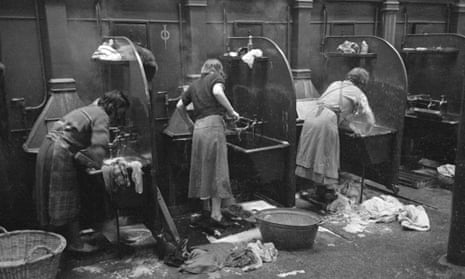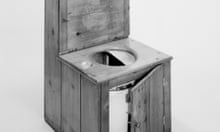Greywater recycling systems collect the water you’ve used in your sinks, dishwashers, showers and baths, and then clean it up and plumb it straight back into your toilet, washing machine and outside tap.
A system like this can reduce your water usage by about 50% so, if you switch to a water meter, you could potentially halve your water bills as well as reducing your water footprint.
Sounds like a neat way to address the problem of water shortages, doesn’t it? Then why isn’t everyone doing it? How much do these systems cost, how do they work in practice and which one should you get?
How greywater systems work
Unlike a rainwater harvesting system, which relies on rainfall, greywater is in plentiful supply on a daily basis - the more clean water that you use to wash yourself, your food and your dishes, the more greywater you will have to recycle. But while you’ll find greywater systems in hotels, university hostels and even National Trust properties, it’s rare to find a homeowner utilising a greywater system – or even a manufacturer supplying this market. Why not?
Because greywater, says Jacob Tompkins from Waterwise, must be handled correctly, and at the moment that makes it expensive: “People in the UK are used to the finest quality water in the world coming out of their taps, but water-borne diseases are the world’s biggest killers. The problem with a greywater system is that you have to store contaminated water - water that may have been used to wash meat, wounds or who knows what. That means bacteria will start to breed, and it will start to smell after just three to four days. As a result, you have to treat it like the water companies do, which would normally involve chemical treatment, filtering or using ultraviolet light. All of these options will increase your energy usage, on top of any energy you’ll use pumping the water into a storage tank and back out again around the house.”
While this won’t add that much to your energy bills – typically just £20 a year – it does make the system as a whole less environmentally friendly. More progress could be made, says Tompkins, if the process could be managed at a community level: “Water companies need to move away from selling water to selling water services. These could include installing and maintaining greywater systems, which mean they were properly serviced - and would make them affordable.”
How much do greywater systems cost?
There are a number of different greywater systems and they vary in size and price. The larger whole-house systems, such as those sold and installed by Aquality, are not even marketed to domestic customers, arguing that due to the high cost of the technology, costs are “prohibitively expensive” for homeowners. “Our system costs £3,000 to £6,000 and then you’ve got installation costs of at least £1,000 on top,” says MD Lutz Johnen.
What’s more, he says, any money you save on your water bills would at least partly be eaten up by the annual cost of safely maintaining the Aquality system, because you need to pay a specialist around £150 a year to clean the system’s high-tech membrane filters. Even if you’re happy to pay this every year, Johnen points out that it is an ongoing cost which may put off potential buyers of your property.
“Greywater systems are used successfully in the hotel and leisure industry, where businesses which use a lot of water can save significant amounts of money,” says Neil Pendle, MD of Waterscan, another greywater systems provider. “However, the technology is just too expensive at the moment to install in a family house. Personally, I would wait until new, cheaper solutions which use less energy – currently being trialled in Germany – are available in the UK. When that happens, greywater systems will become the magic bullet for reducing water consumption.”
But while a comprehensive system that recycles all the greywater in your house may be too expensive an option in 2014, it is much cheaper to install a smaller tank that stores just your bath and shower water and uses it solely to flush the toilet.
In the UK, ReAqua is the only company currently selling such a system, which has the potential to cut your water consumption by up to 30%. Prices vary from online retailers but if you go directly to the company, you can expect to pay around £1,000 for a basic system and up to £300 to install it in an existing bathroom. After that, it’s just £30 a year to maintain.
“All you have to do is change the filter and top up the disinfectant used to clean the water – it’s as simple as changing a bag on a vacuum cleaner,” says Stephen Bates, ReAqua’s MD.
The disinfectant colours the water pink so you know it is free from contaminants.
A more complex system, ReAqua+, costs an extra £1,000 but will also recover 50% of the heat in the greywater. It will feed this heat back into your home’s central heating system, lowering your energy bill.
Currently, according to the company itself, the typical payback period for both products is three to seven years depending on how much water you use, but in the future it may only be a matter of months.
“In a couple of years, we expect to be selling it within £300 to £400 price bracket.”
The tank, which stores up 110 litres of greywater, is only 30cm deep and can be enclosed in a cupboard or mounted on the wall. A competent local plumber should be able to install it using the pipe labels supplied by Reaqua.
Looking to the future
Could this sort of greywater system become more commonplace in the near future? Severn Trent Water certainly seems intrigued about the potential of the ReAqua system to help its customers to save water: it recently paid for ReAqua tanks to be installed in 10 new build homes as part of a trial. Following positive feedback, the company says it is now hoping to offer some of its employees the opportunity to have the ReAqua system installed in their homes for free and is talking to a building developer about larger scale trials.
“Water companies are getting excited because if our greywater systems are deployed widely across a region, you will really start to make a regional difference to water consumption,” says Bates. “One day, we think the water companies will subsidise the cost of our product, so customers could get it virtually for nothing.”
Five things you need to know about greywater systems
1. It’s best to use a competent plumber who is a qualified greywater installer. It is very important that pipes are labelled correctly.
2. Even water that comes out of the outside tap should ideally be filtered, especially if you are watering plants that you intend to eat or in gardens where children may play.
3. Before you install a greywater system, consider the ongoing costs of any necessary maintenance and filtering. Make sure you understand how frequently you will need to check and clean any filters.
4. Bear in mind that the easiest time to fit a greywater system is likely to be when you are renovating your bathroom.
5. It is relatively cheap for a property developer to fit a greywater system during a build. So if you are buying a new-build, look for a property with a greywater system already installed. This is a good sign that you are buying a sustainable home.
- Rainwater harvesting: can the weather help with bills?
- Composting toilets: a growing movement in green disposal
Interested in finding out more about how you can live better? Take a look at this month’s Live Better challenge here.
The Live Better Challenge is funded by Unilever; its focus is sustainable living. All content is editorially independent except for pieces labelled advertisement feature. Find out more here.






Comments (…)
Sign in or create your Guardian account to join the discussion